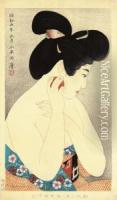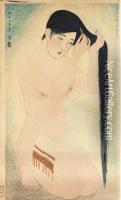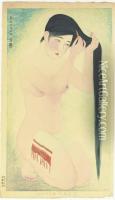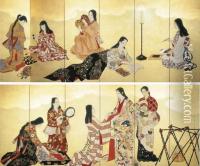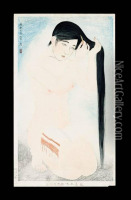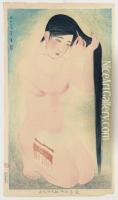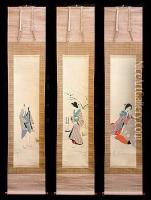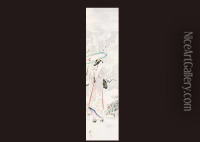Kobayakawa Kiyoshi Paintings
Kobayakawa Kiyoshi was a notable Japanese painter and printmaker who played a significant role in the Shin-hanga movement. Born on September 11, 1896, in Wakayama Prefecture, Japan, Kiyoshi initially studied painting under the yōga (Western-style painting) artist Kuroda Seiki. However, his artistic direction took a notable turn when he became involved with the publisher Watanabe Shozaburo, who was instrumental in the development of the Shin-hanga style, which sought to revitalize traditional ukiyo-e art by integrating Western techniques and perspectives.
Kiyoshi is particularly renowned for his bijinga (pictures of beautiful women) prints, where he combined the delicate lines and stylization of traditional Japanese woodblock prints with a more modern, cosmopolitan sense of beauty and fashion. His works are characterized by their elegant figures, subtle use of colors, and the fusion of both Eastern and Western aesthetics. Kiyoshi's approach provided a fresh perspective on the classic ukiyo-e genre, making it relevant for the 20th-century audience.
Throughout his career, Kiyoshi continued to explore the Shin-hanga style, contributing to its international recognition during a period when Japan was increasingly open to foreign influence. His works were exhibited abroad, helping to introduce and establish the Shin-hanga movement in the Western art world. Despite his untimely death at the age of 52 on November 28, 1948, Kobayakawa Kiyoshi left behind a legacy that had a lasting impact on the evolution of Japanese printmaking. His prints remain highly sought after by collectors and are held in significant collections worldwide, including in institutions such as the Museum of Modern Art in New York and the Art Institute of Chicago.
